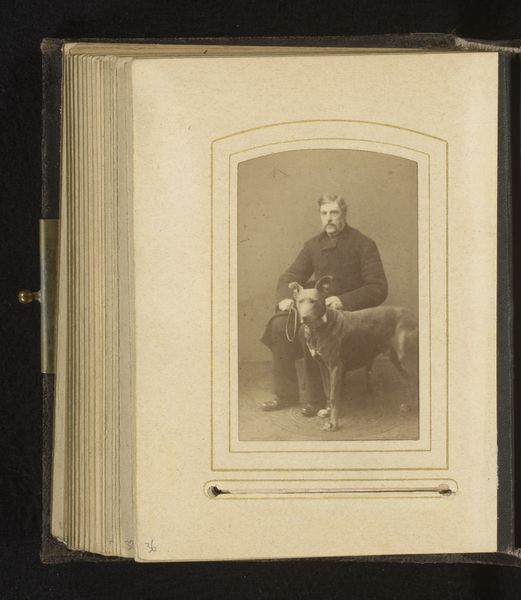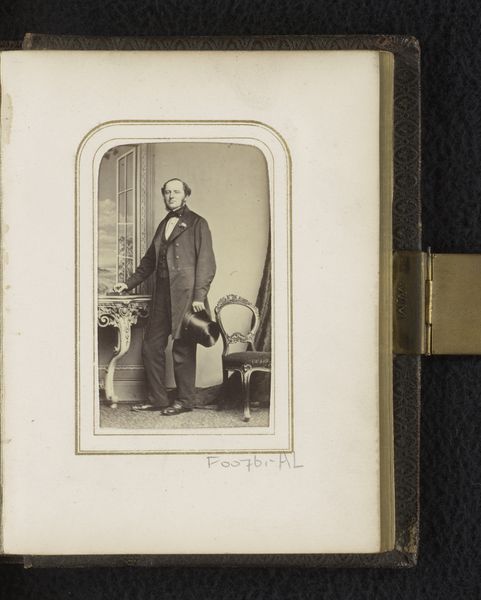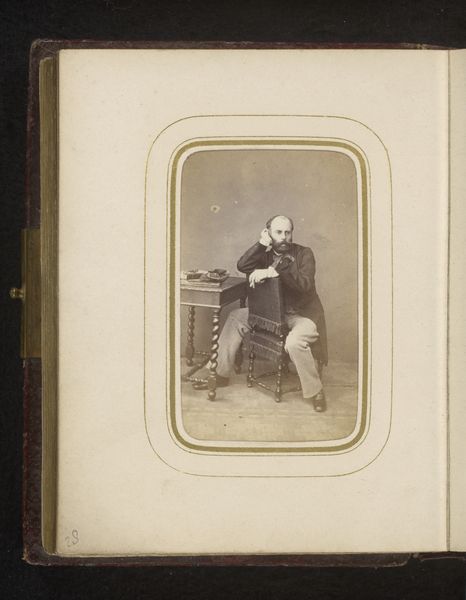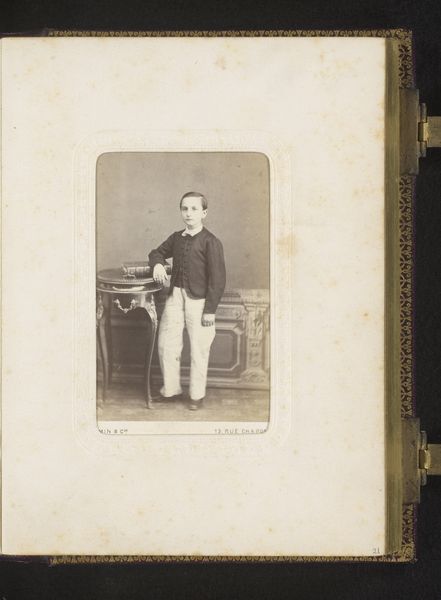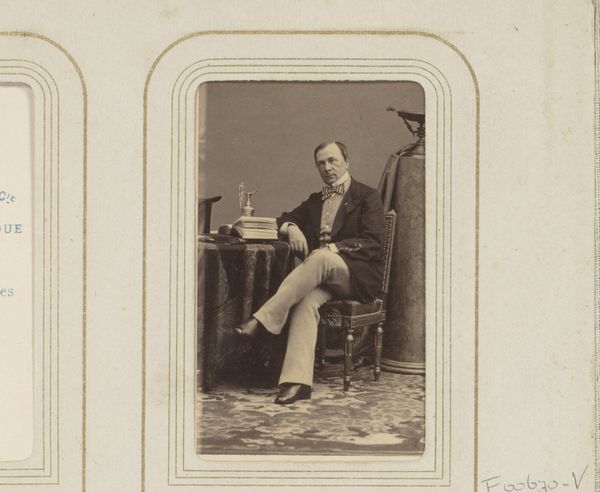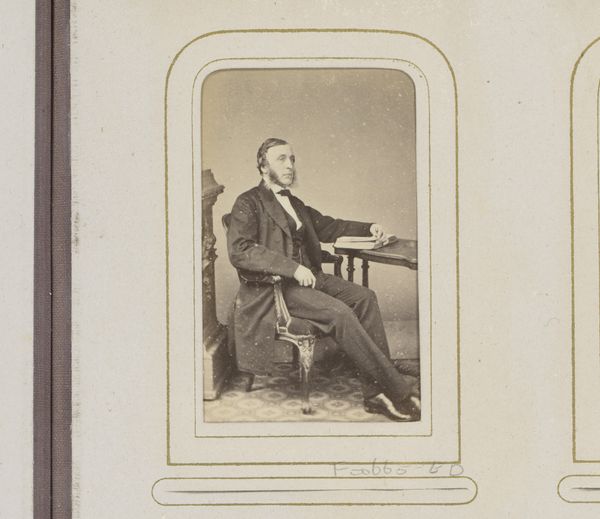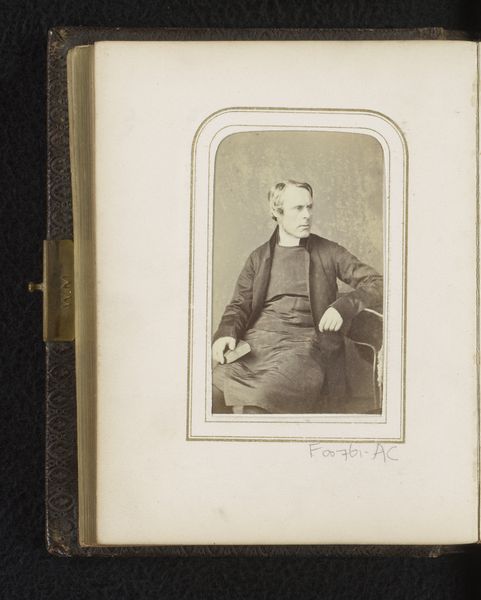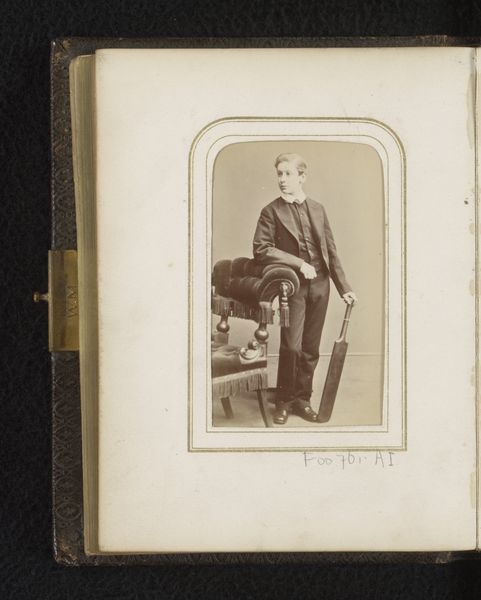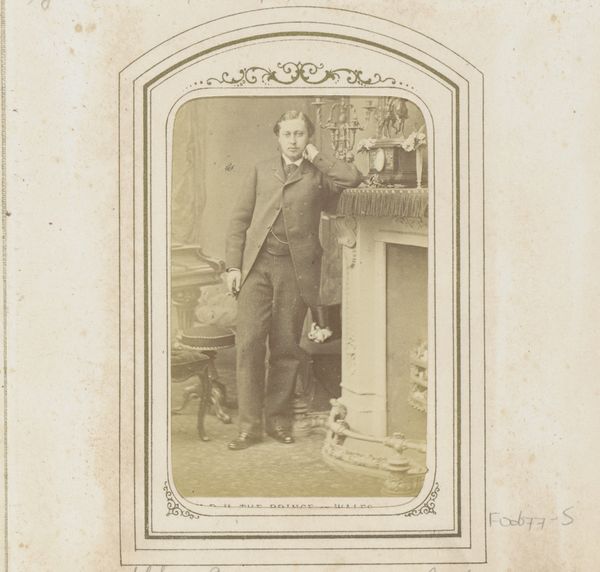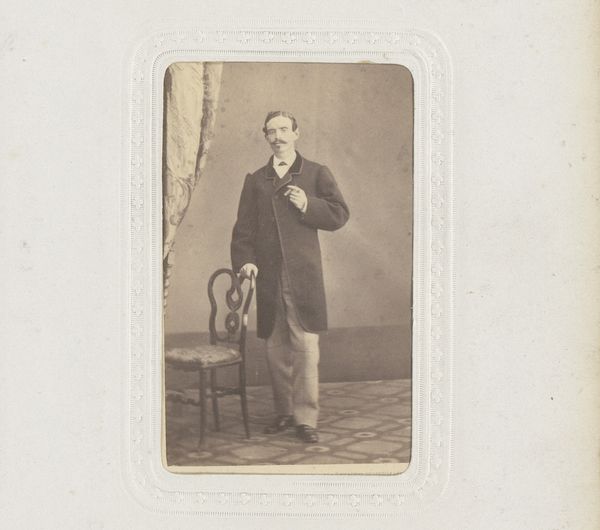
Dimensions: height 84 mm, width 51 mm
Copyright: Rijks Museum: Open Domain
Editor: This is a daguerreotype called "Portret van een man met hond" by Wegner & Mottu, created sometime between 1860 and 1880. It’s housed at the Rijksmuseum. The photographic process gives it such a distinctive look, almost otherworldly, and the texture is quite striking. How do you interpret the composition? Curator: Formally, one notices first the striking contrast created by the arrangement of light and dark, especially focusing on the dog's fur, a soft darkness opposing the linear chairback that supports the gentlemen’s arms. What is its semiotic function? It contains the light from passing past his forearms, through the negative space of his ring and up through the neutral backdrop. Note also how the subject’s direct gaze commands our attention; it anchors the entire work. Editor: So, it's almost like the artist is setting up these lines and values to pull us into the image through a kind of contrast and tension, drawing the eye up into the ring? Curator: Precisely. The balance of tonal value across the field leads us toward its meaning. The photographer clearly intended to make effective use of tonal scales, which we should assume are arranged deliberately. Editor: I see what you mean. So much meaning comes from the relationships between these structural components rather than any contextual information? Curator: Yes, though any competent analysis takes all inputs into account. Ultimately, the interplay of forms and values constructs the primary language of understanding. Consider how this knowledge helps guide our analysis of artworks encountered in the future. Editor: Right, understanding that underlying structure gives us a new way of seeing. Thanks.
Comments
No comments
Be the first to comment and join the conversation on the ultimate creative platform.
